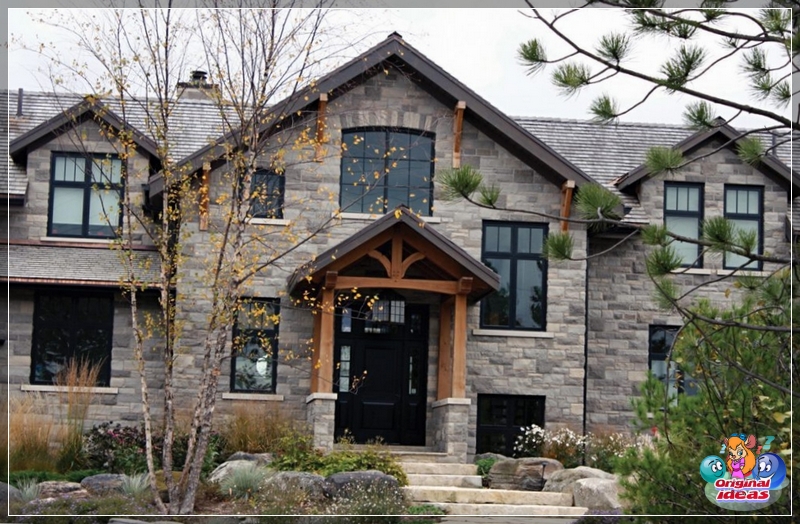
Finishing options for the facade of a private house have an impressive list, and anyone can choose the type of decoration that suits him the most. When the necessary options for finishing the facade of a private house are selected, the photos clearly show the advantages and disadvantages of each of them. The front side of the building is its face, and, of course, any person wants this face to be attractive and original. There are many options for finishing the facade of a private house, and the task comes down to taking into account the structural features, local traditions and climatic conditions.
1. Features of facade finishing
In the general case, it is customary to call the front wall of a house with all architectural elements: a door, windows, columns, pediment. Such a wall is most often load-bearing, but it can also be made in the form of a fencing element.
When choosing a material for finishing a house, take into account how harmoniously it will fit into the landscapeThere are many designs


An important characteristic is the presence of ventilated gaps. When manufacturing non-ventilated facades, the outer cladding firmly adheres to the wall surface without an air gap. A ventilated system implies a gap between the wall and the cladding, which allows air to circulate, weathering condensation and reducing moisture accumulation.


2. Wooden facade: manufacturing features
Finishing options for the facade of a private wooden house have always attracted increased interest. The wood in the cladding stands out for its beauty and naturalness. Wooden facades can be either ventilated or non-ventilated.
Scheme of a wooden hinged ventilated facadeThere are the following options for finishing the facade of a private house using wood:
Wooden block house
- rounded wooden panels imitating a log frame. The edges of the boards have a profile that provides a tongue-and-groove connection with dense stacking of panels. The width of such boards is 18-25 cm.
Profiled board
- imitating a blockhouse from a bar. A board with a profiled edge 15-25 cm wide and 2-3 cm thick is used.
Lining
- is a wooden planks of different sizes. In accordance with the European standard, lining is produced with a width of 95 mm and a thickness of 12 mm.

Planket
- a wooden plank, similar to a lining, but having a smooth glossy surface on both sides, and most often made of larch.
Partially edged board
- designed to imitate natural untreated wood. This product has 2 different edges: smoothly sanded on one side and bevelled and bark residues on the other.

The timber cladding can be applied directly to the façade surface (non-ventilated version) or with battens. All wooden elements must be impregnated with an antiseptic composition. For the manifestation of the wood structure, a tinting impregnation is used, which focuses the texture and gives the desired shade.

The most common colors and structures are oak, beech, ash, walnut in natural form or by imitation.
3. Plaster
Facade wall plastering is one of the most common options

Several technologies are used to make the plastered surface decorative:
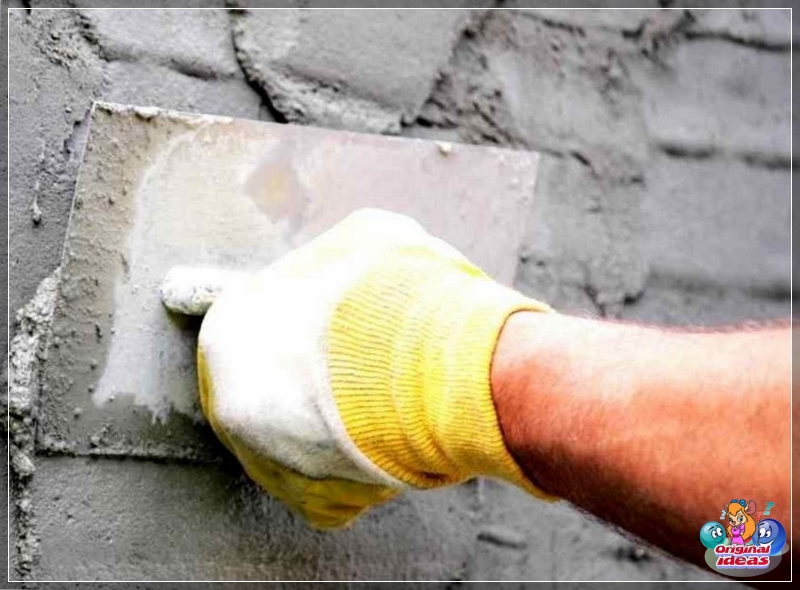
4. Brick
When facing the facade, decorative bricks of various types and sizes are used. Brick facade finishing options are illustrated in the photo. Finishing can be made as a separate face masonry with a gap for ventilation, or fixed with mortar directly to the wall surface. Decorative bricks for facade decoration differ in different colors, which allows you to create the necessary appearance.
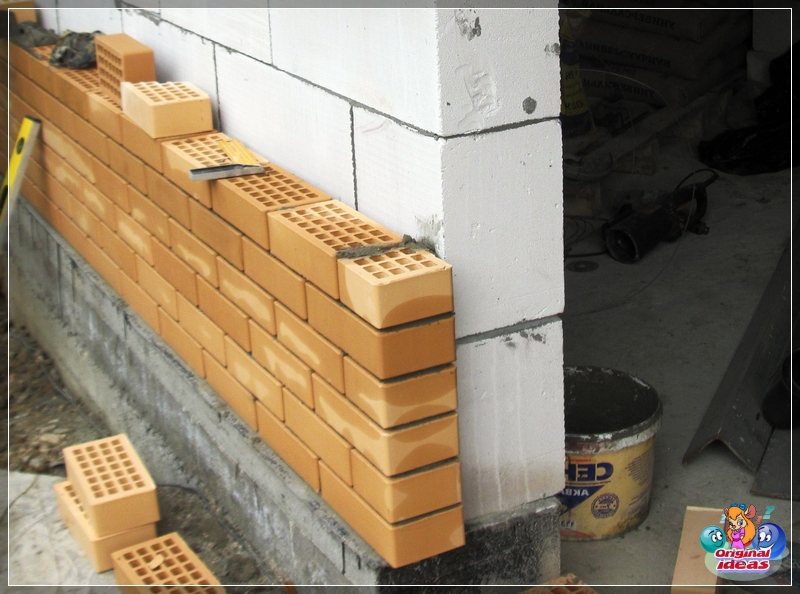
An attractive variety of brick

5. Stone
Stone finishing makes the facade especially attractive. For this purpose, both natural stone and artificial stone can be used. The most popular are granite, marble, gabbro, limestone, diorite, travertine, sandstone. Sandstone has excellent decorative properties, which is produced in the form of ready-made slabs 2 cm thick and 30x60 and 17x35 cm in size.
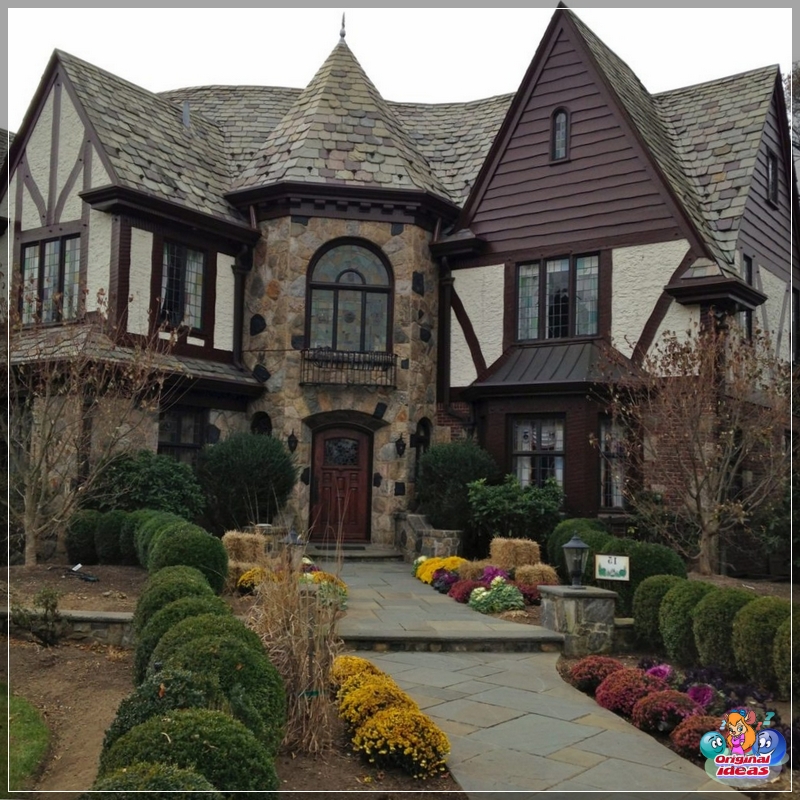

Sandstones from the Dagestan quarries (Frigsky, Akushinsky, etc.).NS.). One of the options for stone cladding - rusticated masonry. In this case, the front side is not processed and simulates a natural torn surface.
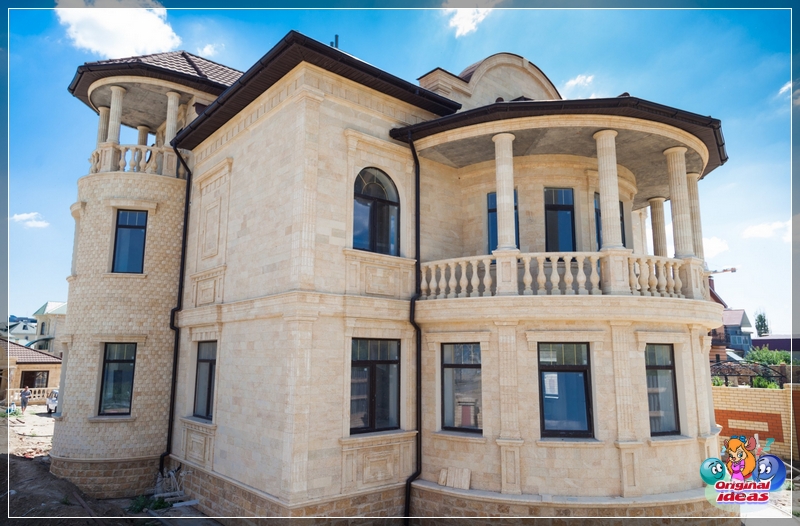
6. Cladding boards and panels
Currently, facade decoration technologies are actively used, associated with the installation of cladding plates and panels from various materials.
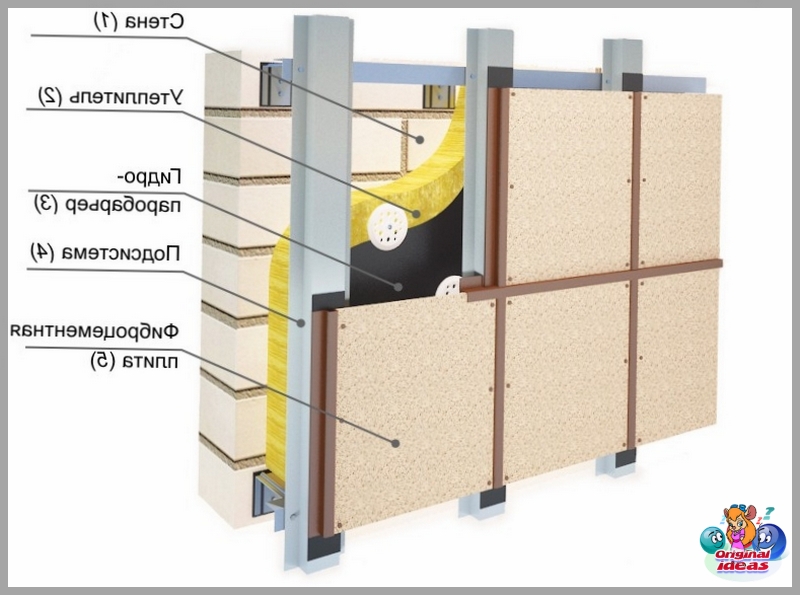
The most common ways can be identified:
Siding panels
Options for finishing the facade of a private house with siding are shown in the photo. Typically used vinyl siding. Their installation on the front wall is carried out using a lathing made of aluminum profiles or wooden beams. The panels can be positioned both longitudinally and transversely. A large assortment of panels is produced in colors.
The scheme of finishing the facade of the house with sidingPolymer coated metal backing panels
These elements are made on the basis of aluminum and galvanized steel with a polyester outer layer. One of the attractive varieties is a profiled sheet (wave or rectangular profile) made of galvanized steel with a polymer coating.
Fiberboard
similar to chipboard, but have a decorated outer protective coating.
Sandwich panels installation schemeSandwich panels
These 3-4-layer panels include metal and plastic layers that provide high mechanical strength, resistance to external factors and a rich appearance.
Fiber cement boards
Such facing material is made on the basis of cement and includes cellulose and plastic additives, as well as other components.

Glass Panels
Refers to an elite facade design due to its high price. Panels are made from foamed glass granulate.
Ventilated cover
Vent is a slab based on mineral wool, which provides high thermal insulation properties. Particularly attractive is the Euro-Vent variety and some types of laminated ventilation with glass canvas and foil.

7. Decoration work
A number of technologies for finishing the facades of private houses provide for painting or varnishing the cladding. For facade works, we offer durable paints of vinyl, acrylic, acrylic-silicone and silicone types. Particularly durable polyurethane paints have become popular. Water-soluble emulsion paints for facade finishing are also sold: styrene-butadiene, silicone emulsion, dispersion-acrylic compositions.
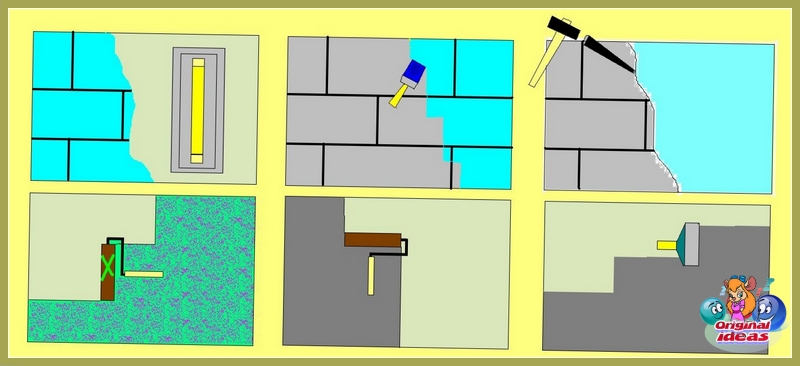
Elements of the so-called small architecture have a noticeable decorating effect. Originality and rich decoration will add such elements as bas-reliefs, sculptures, columns, porticoes. Decoration in the form of carving, painting, stucco moldings can provide gloss even to the most modest facade. To create them, paints, mosaic and stained glass tiles, ready-made decorative elements are used.

There are many options for finishing the facade of a private house. It is necessary to choose the most suitable method and implement our plans on our own or with the involvement of specialists.